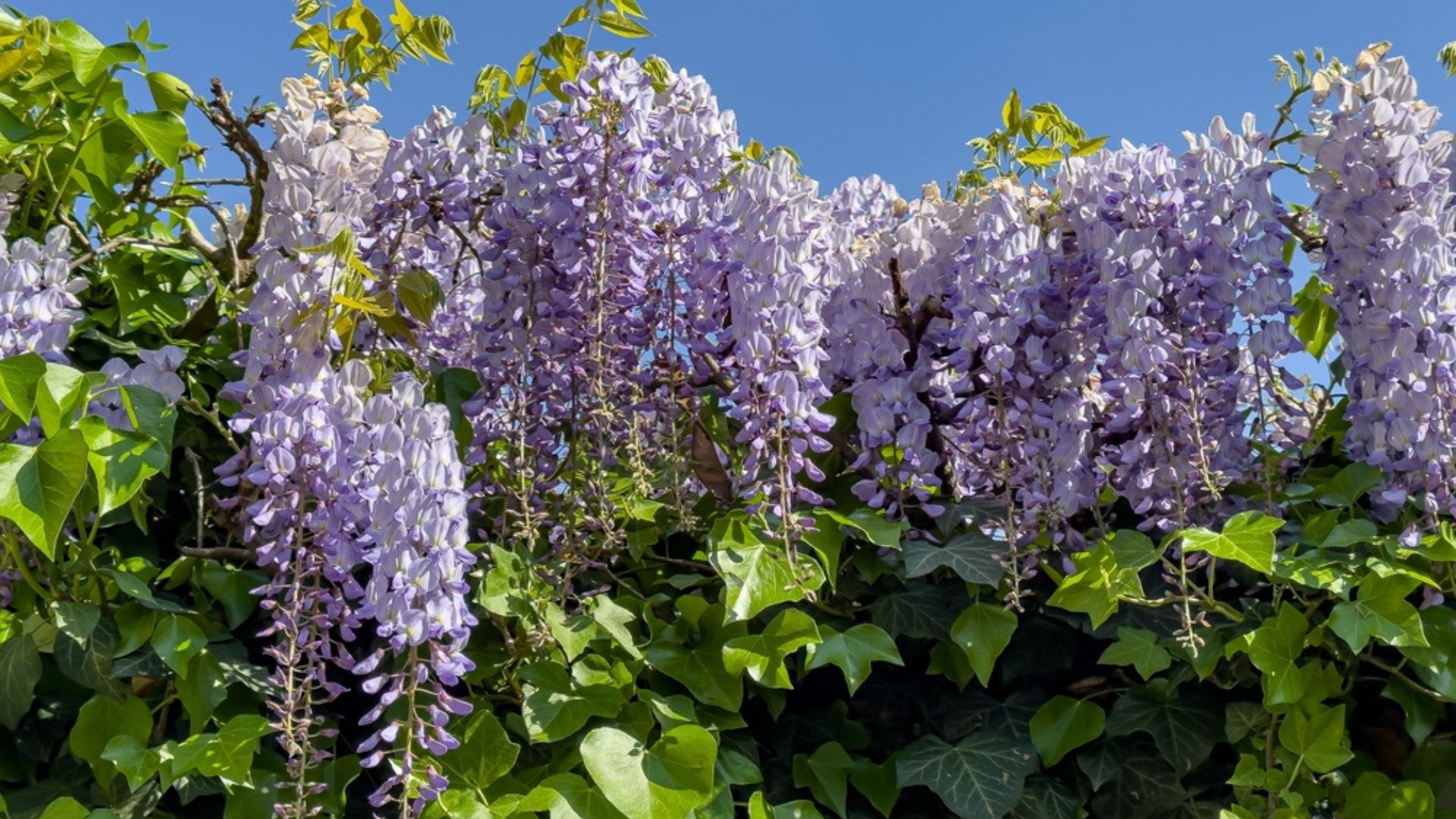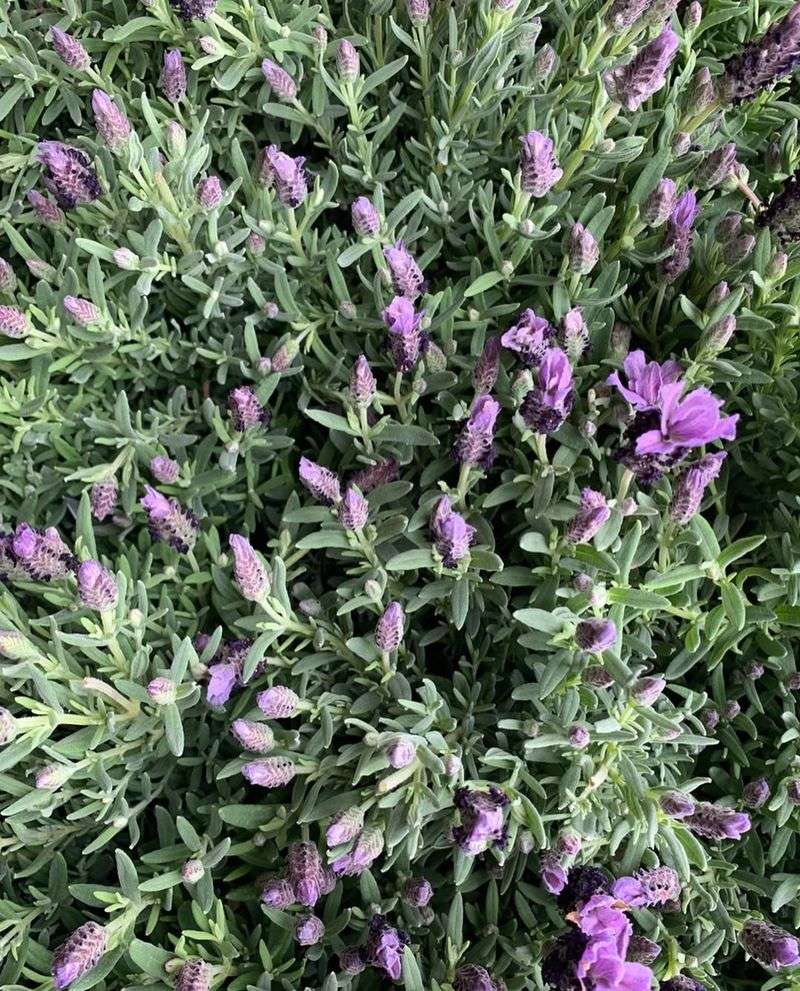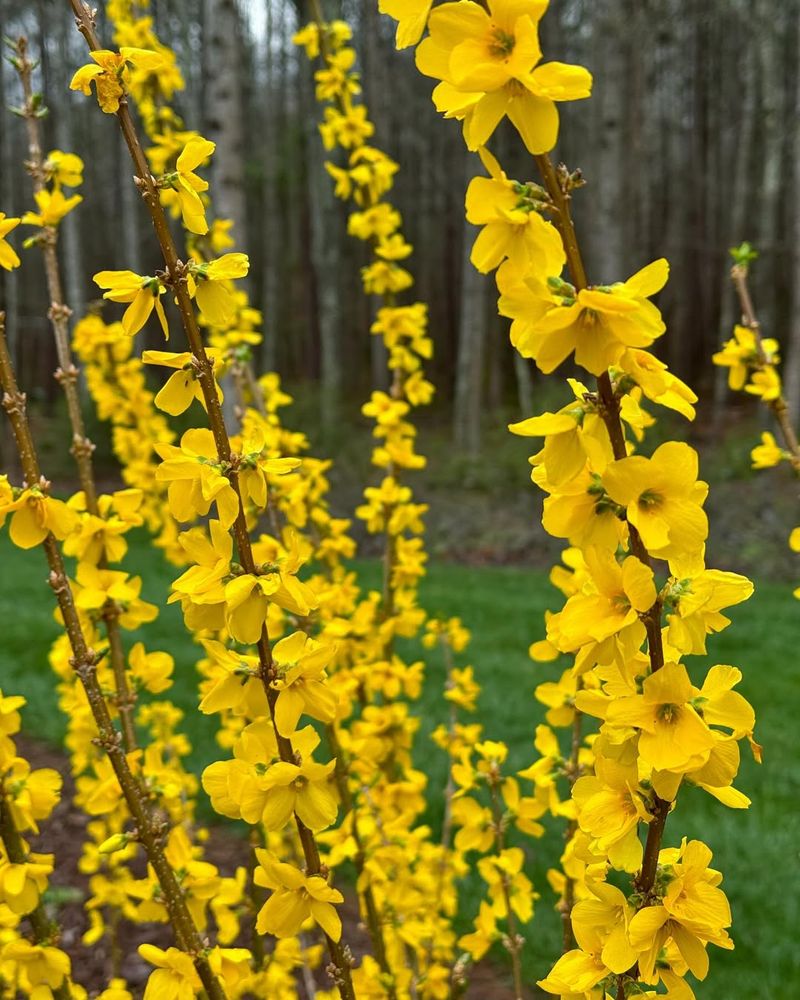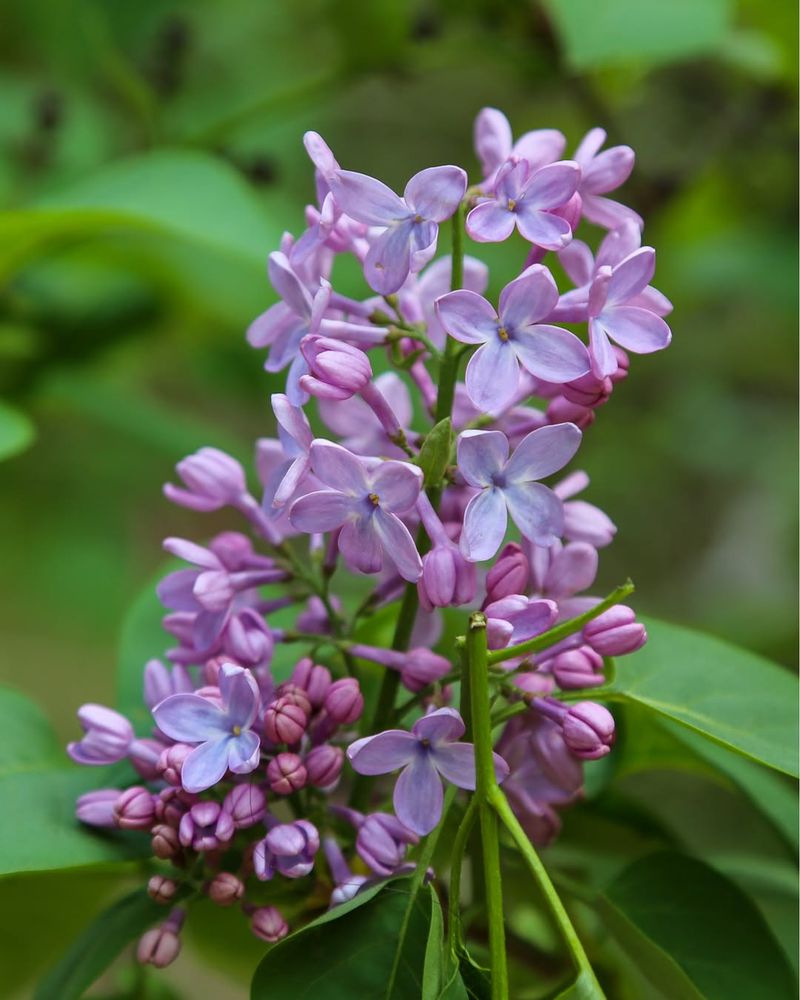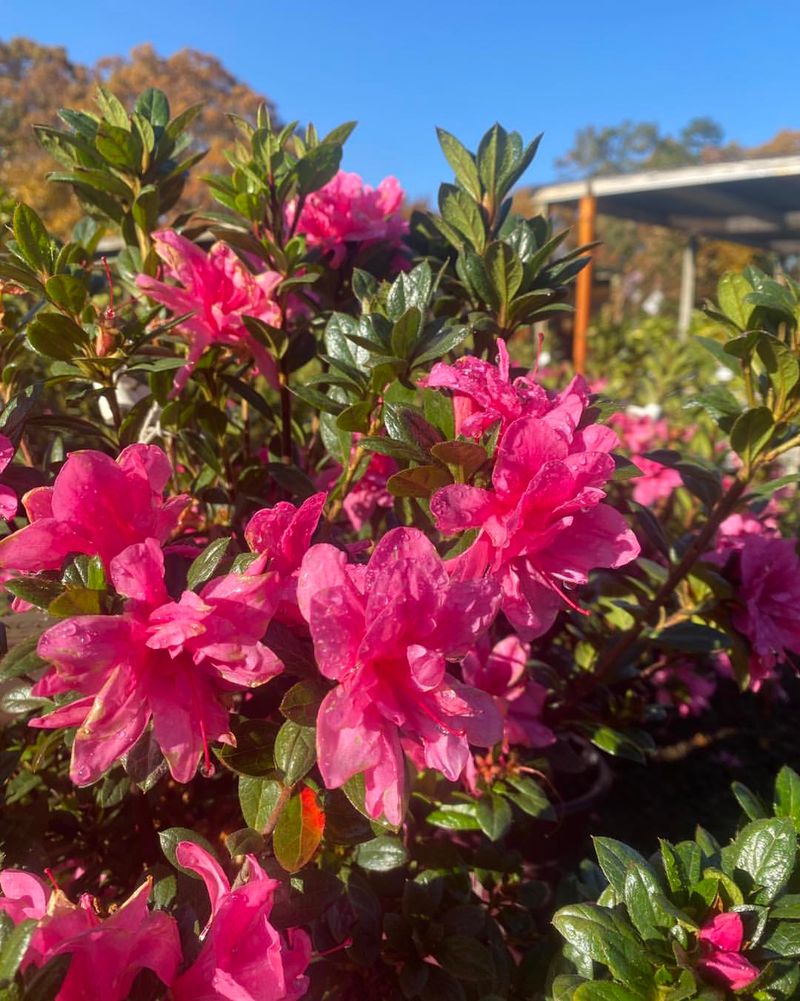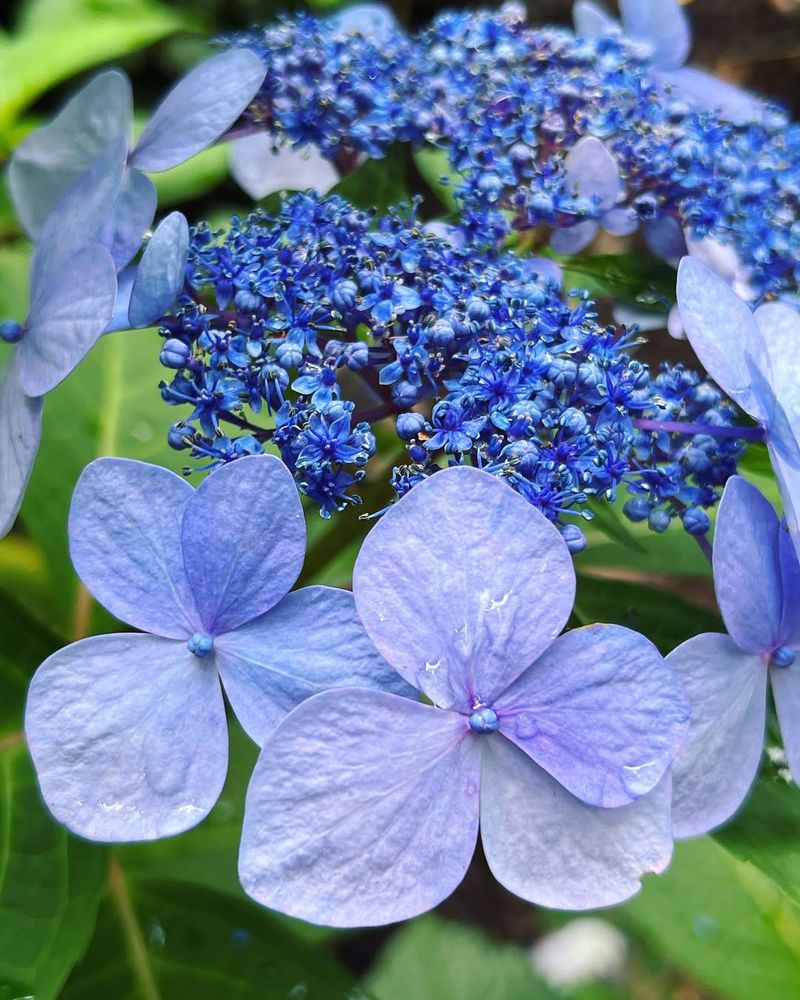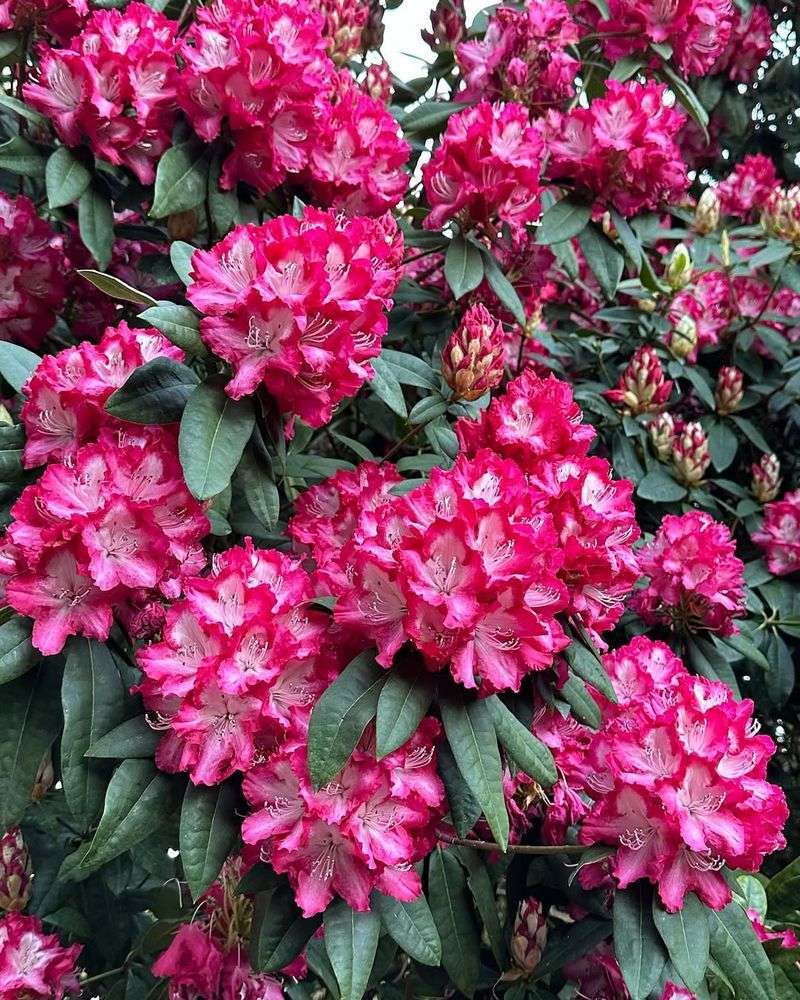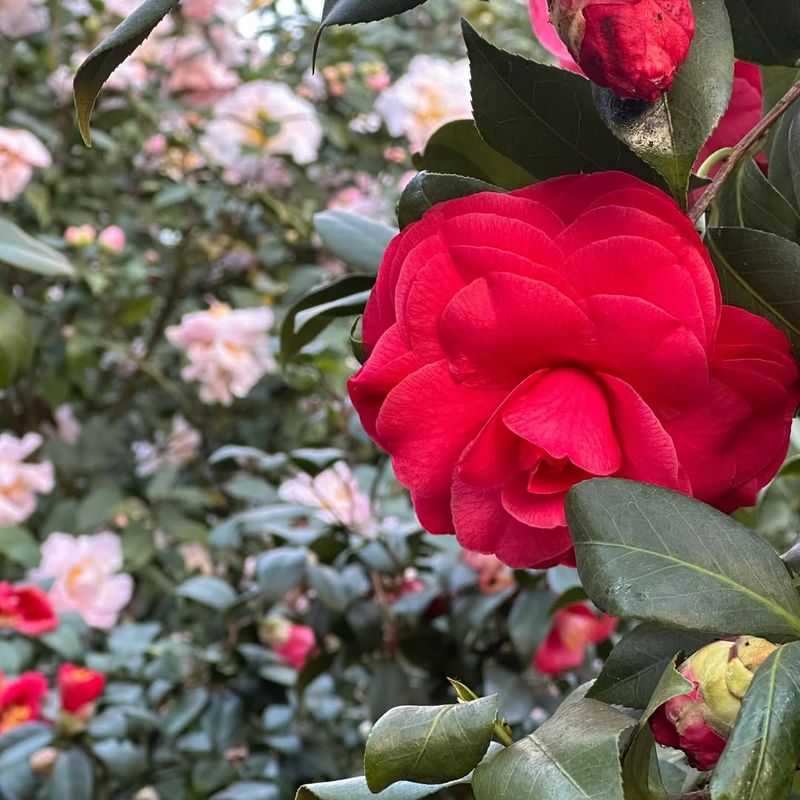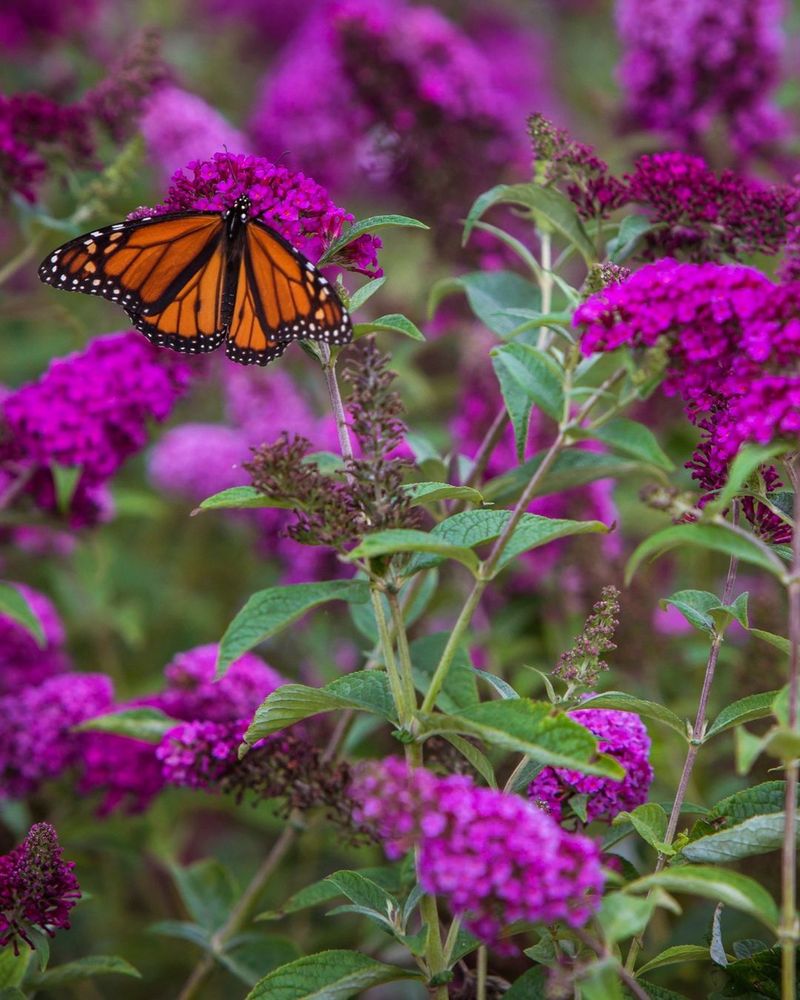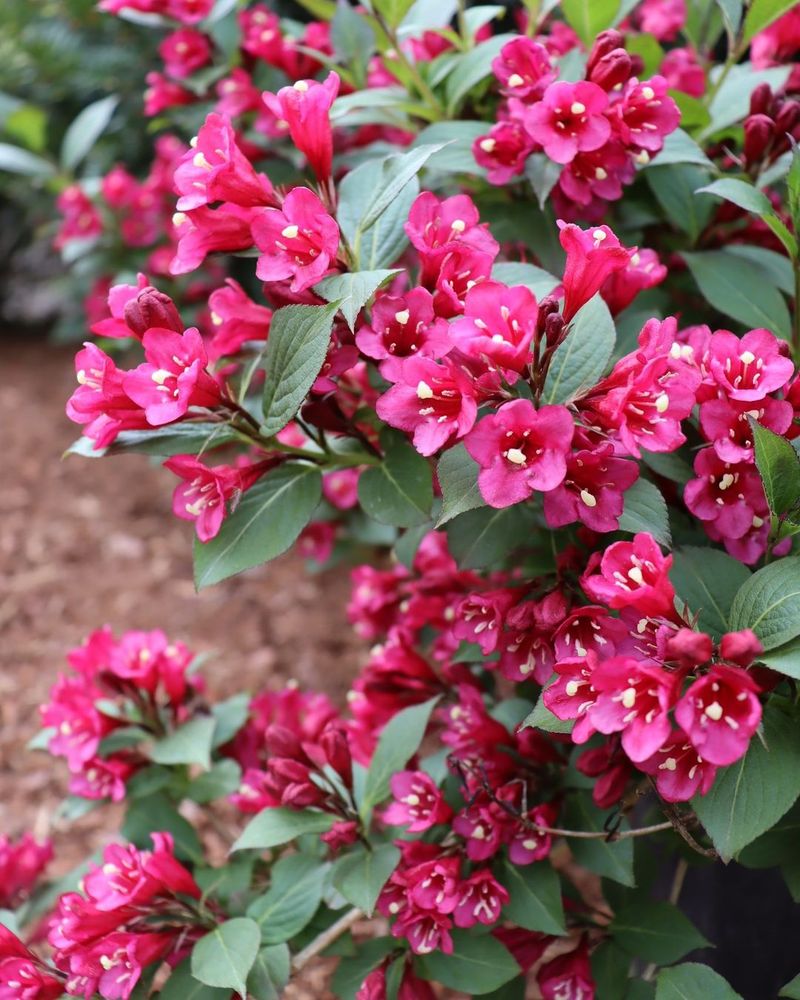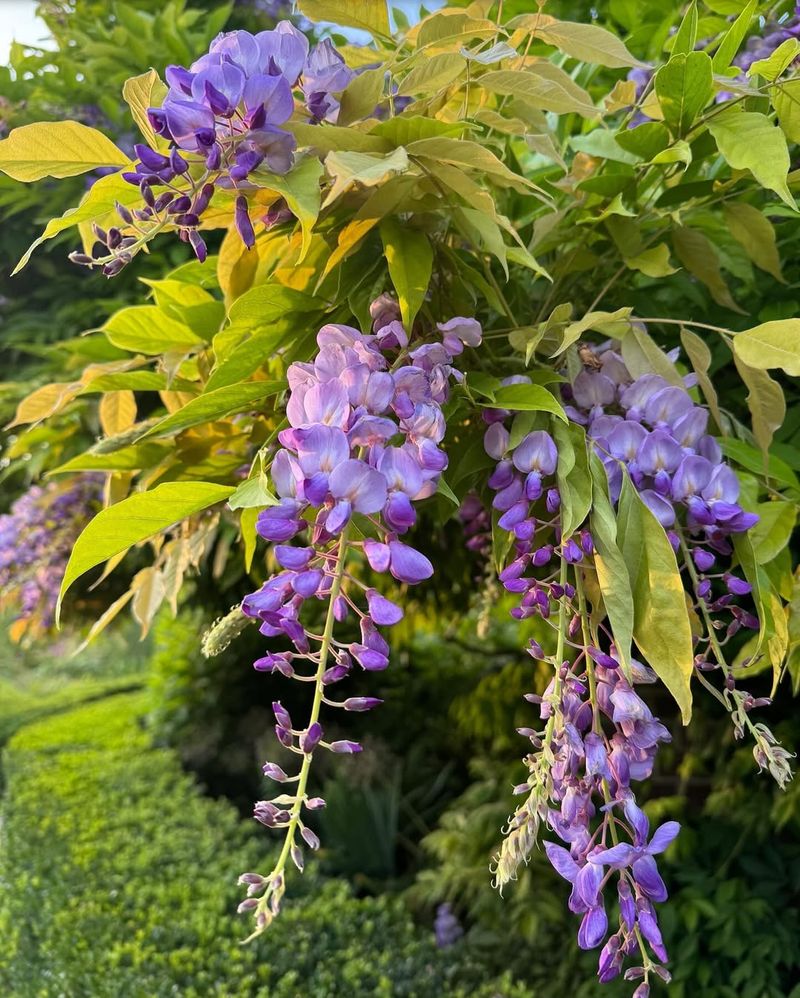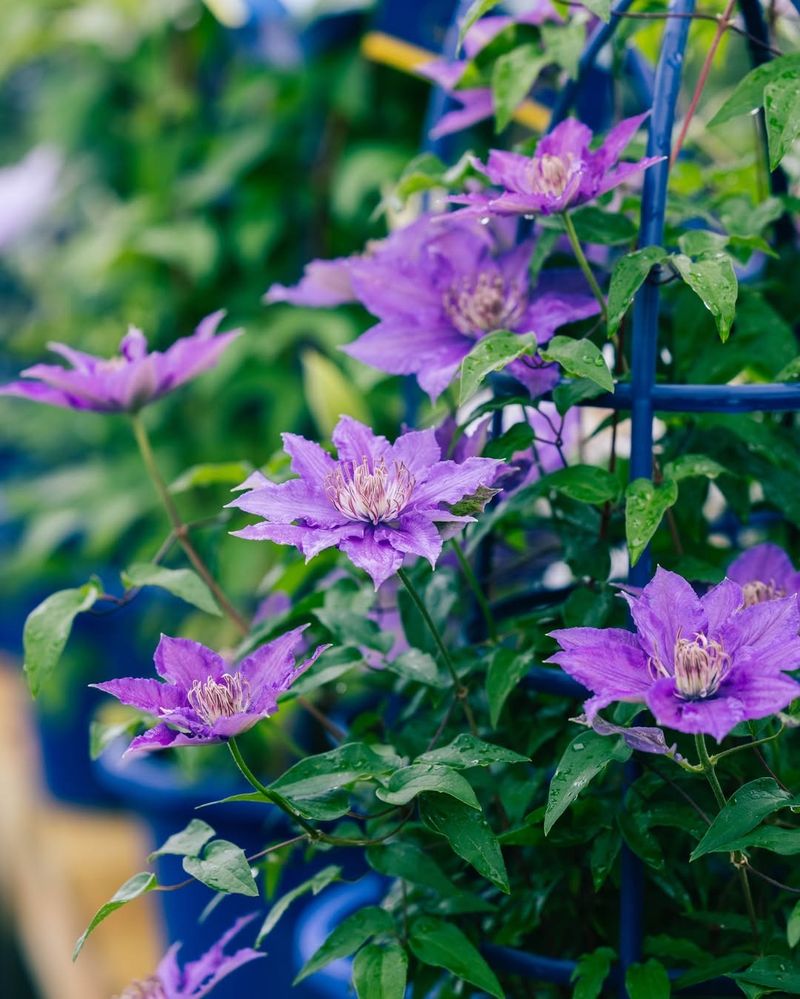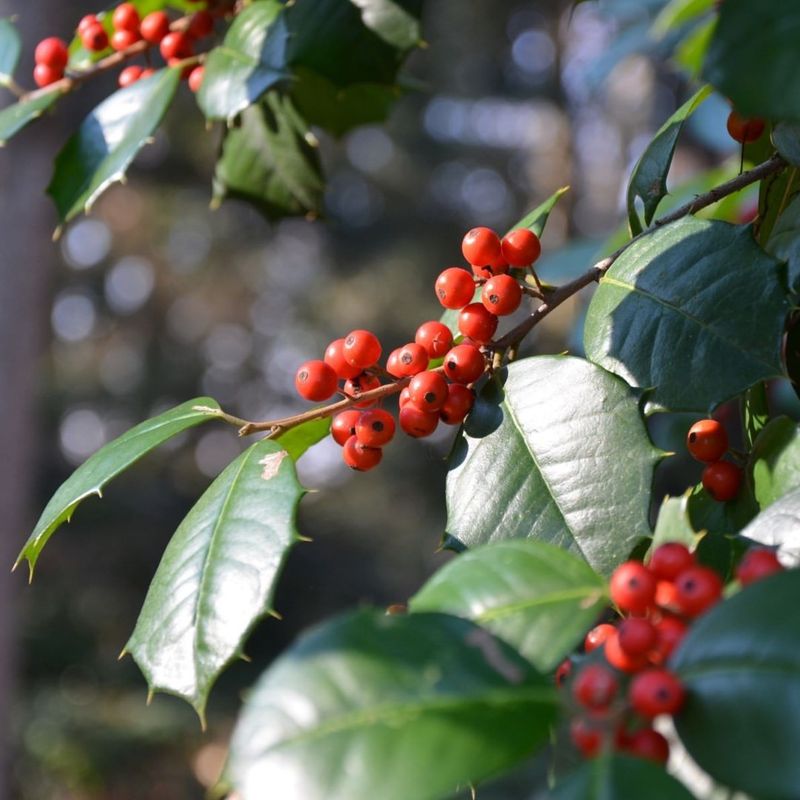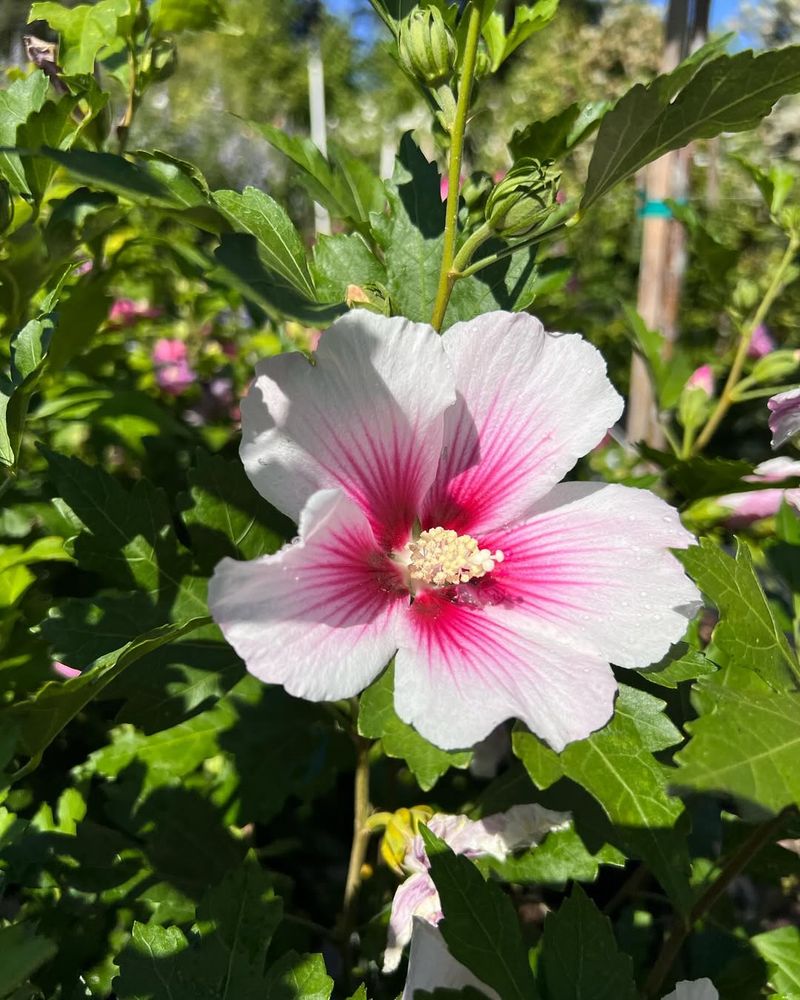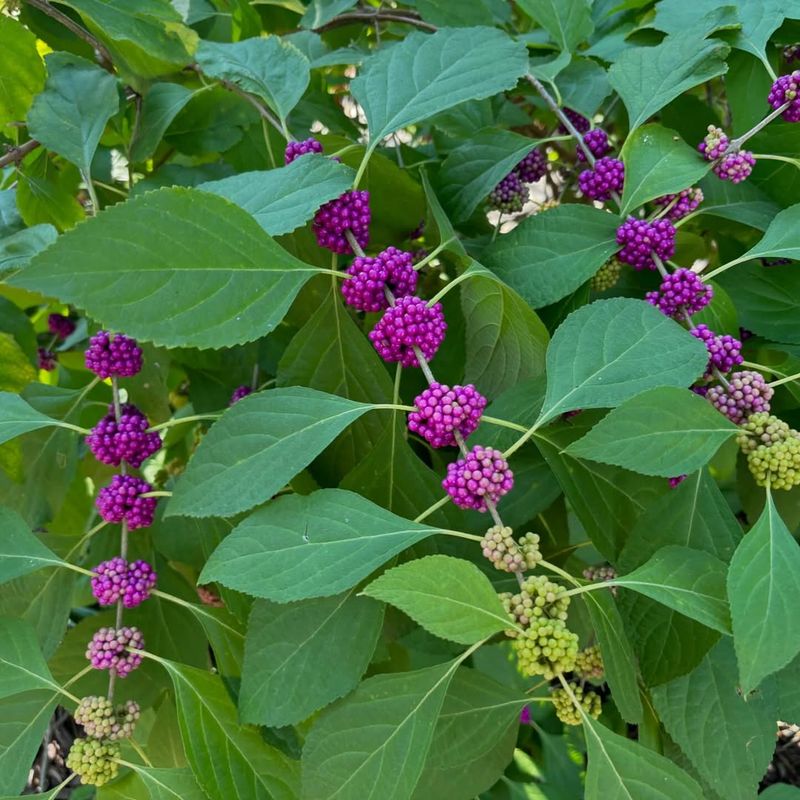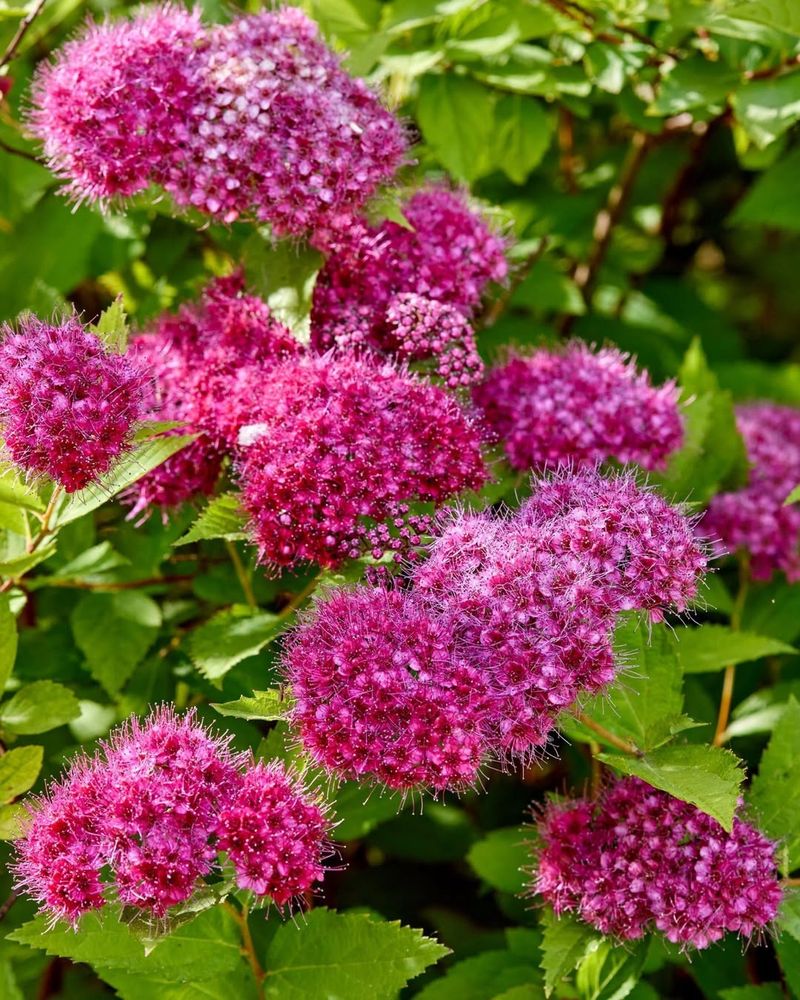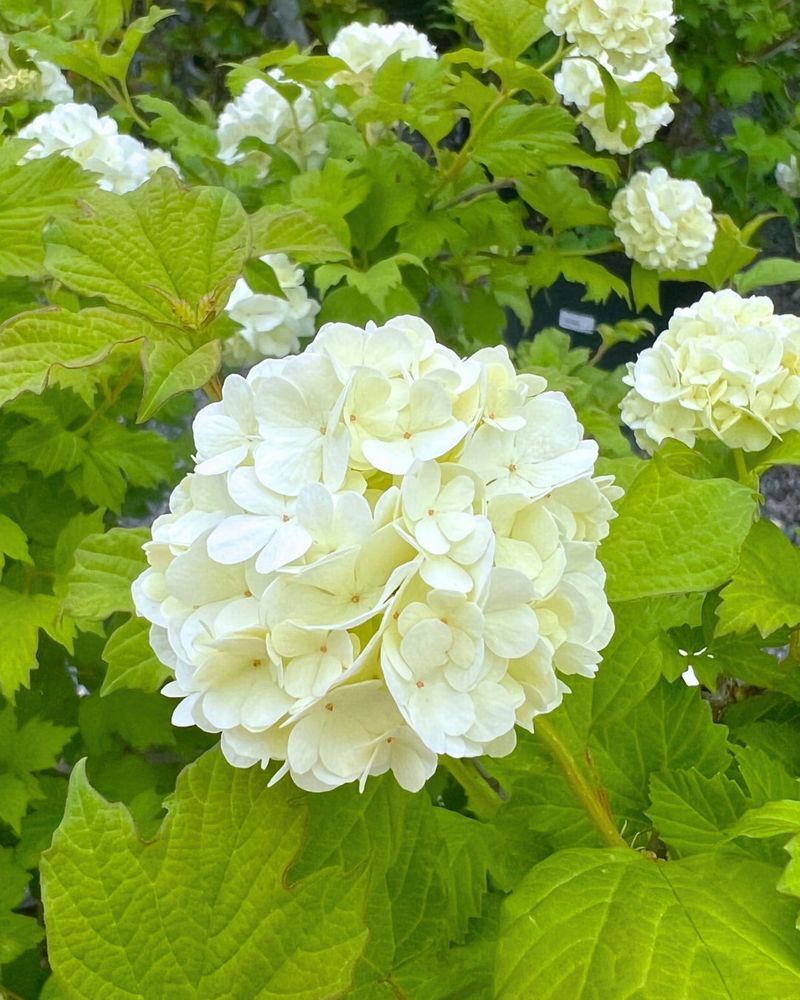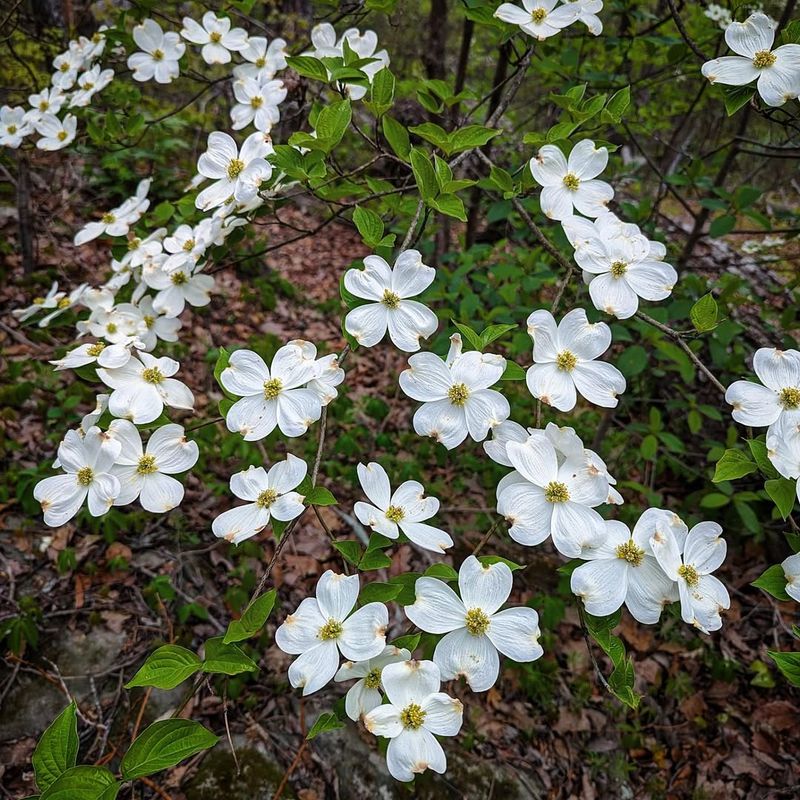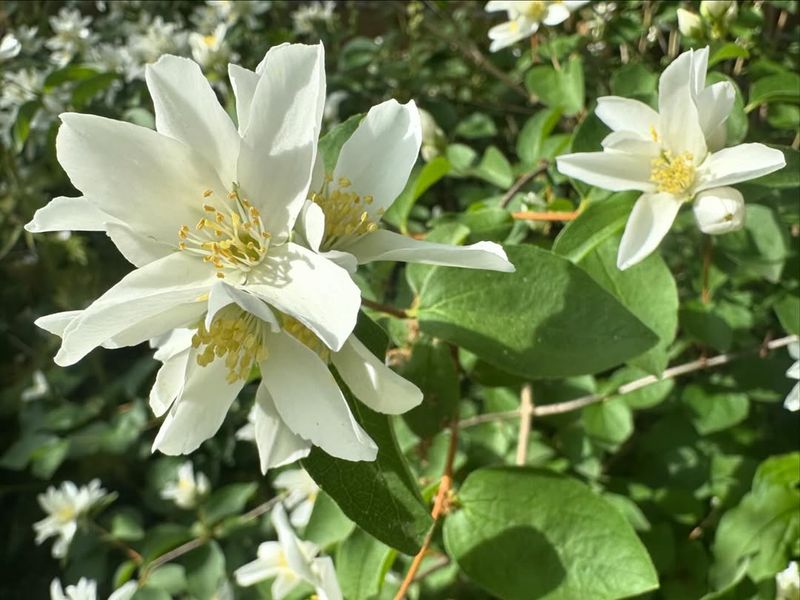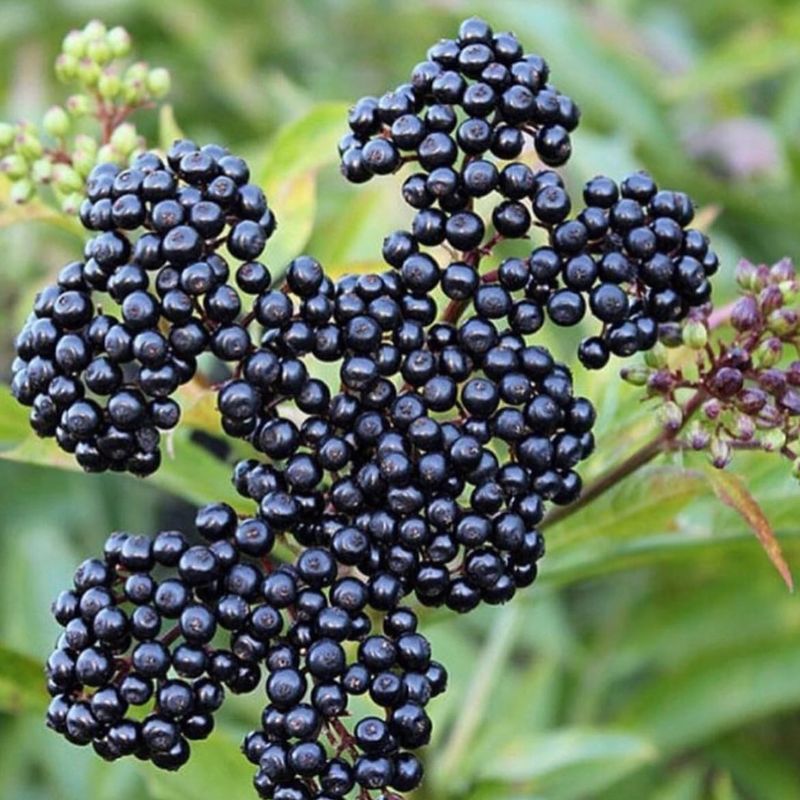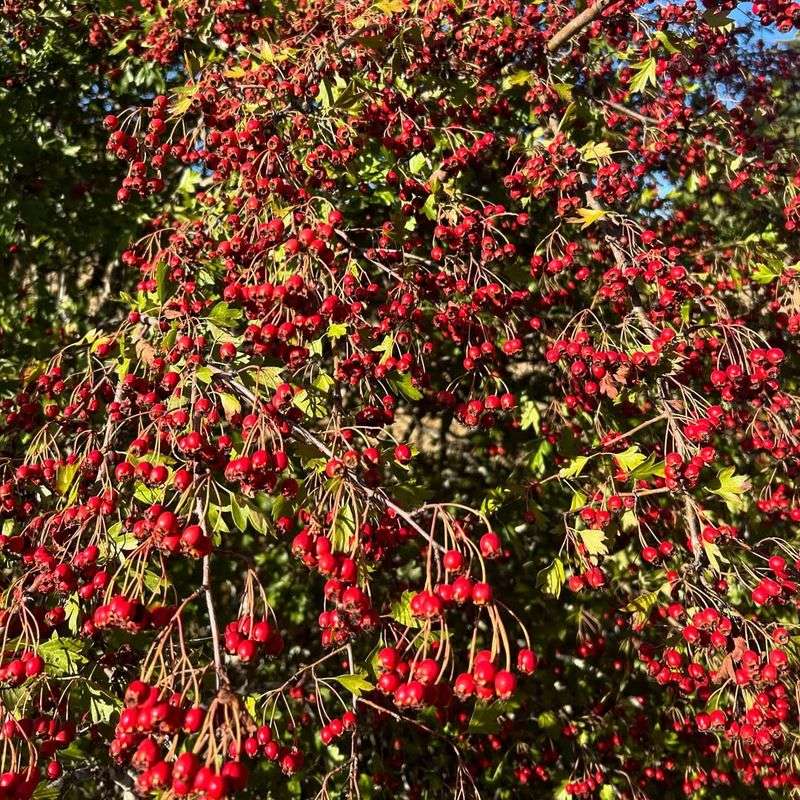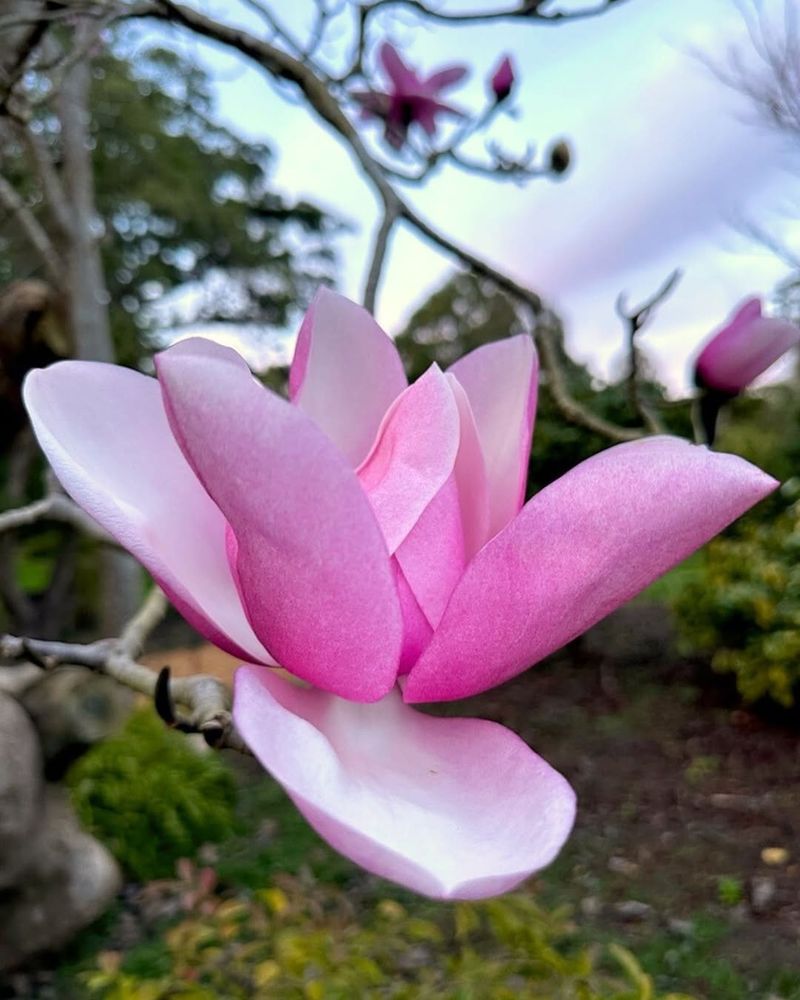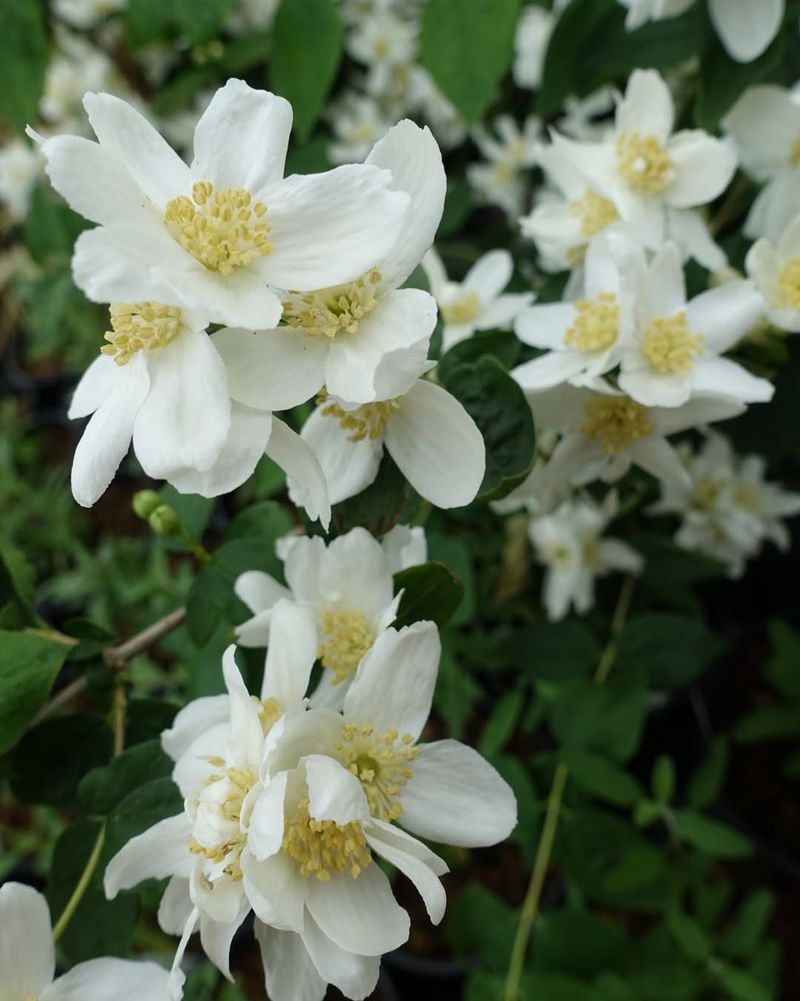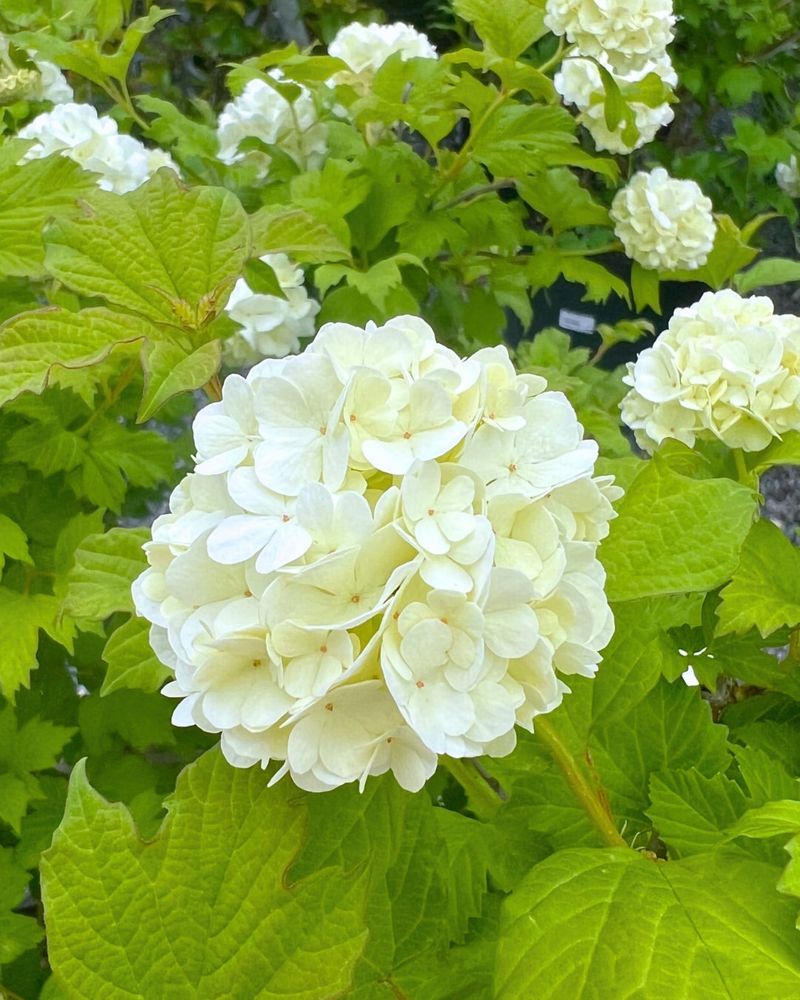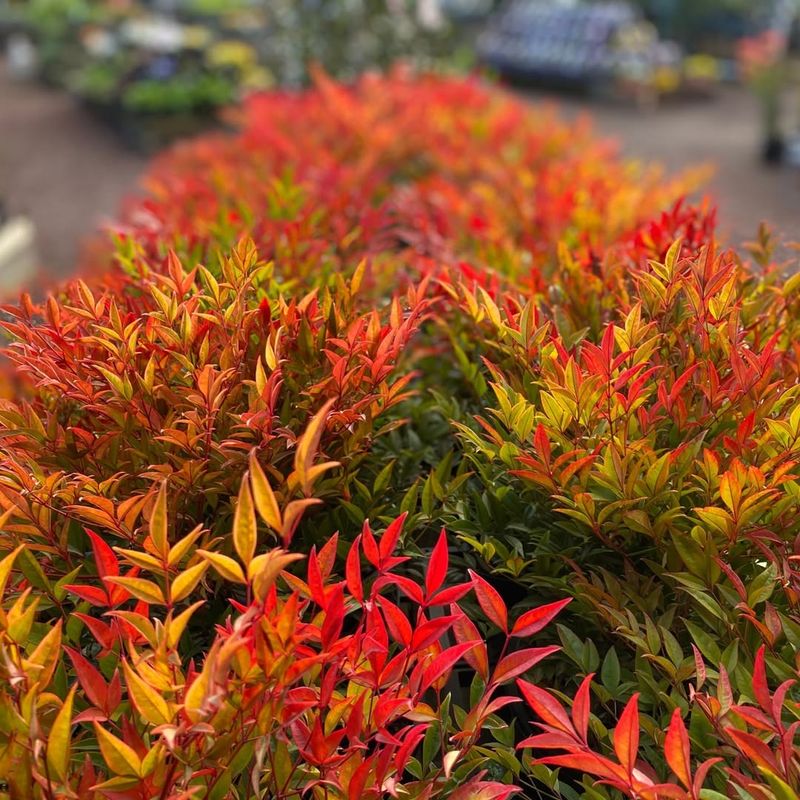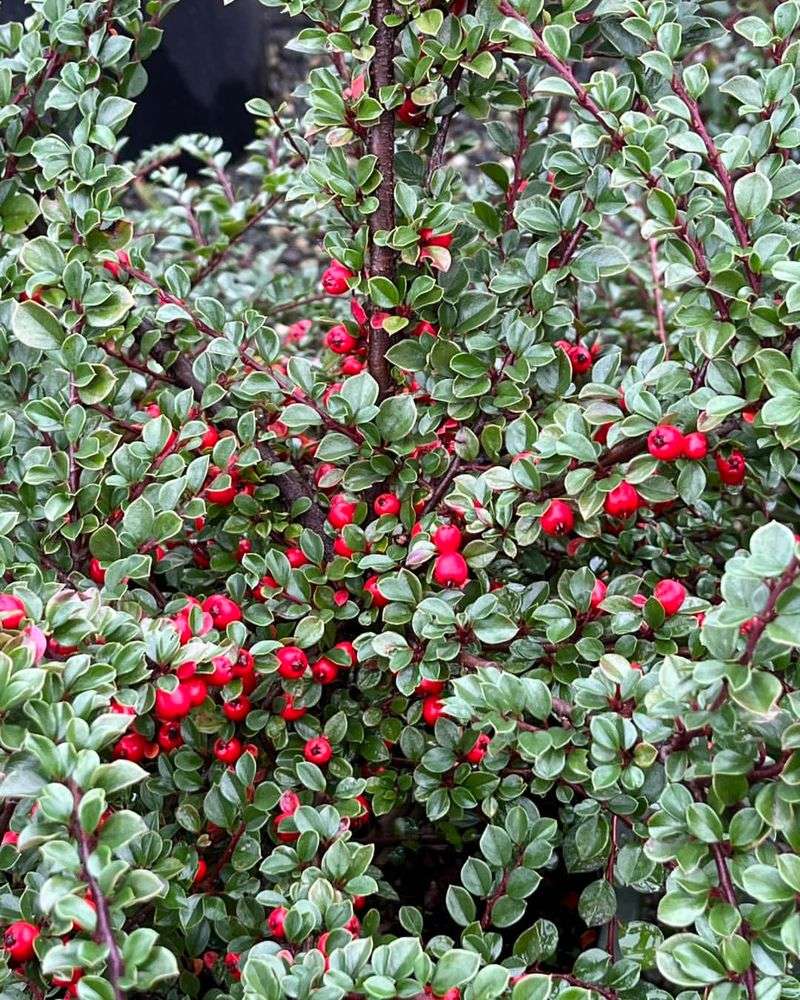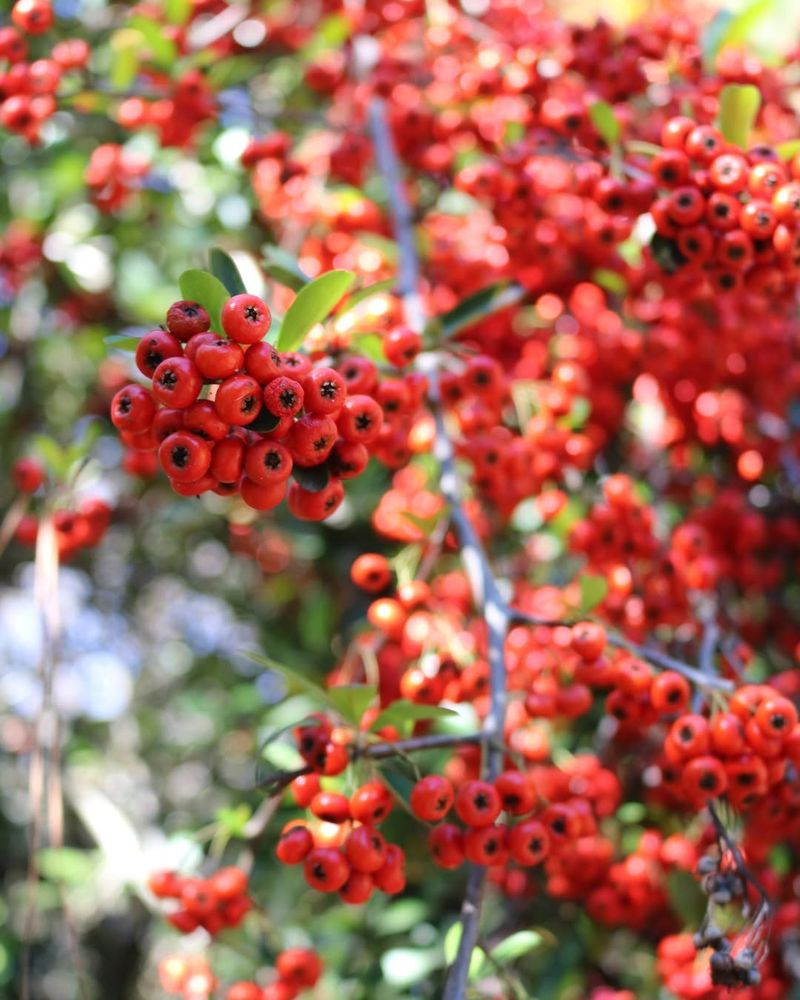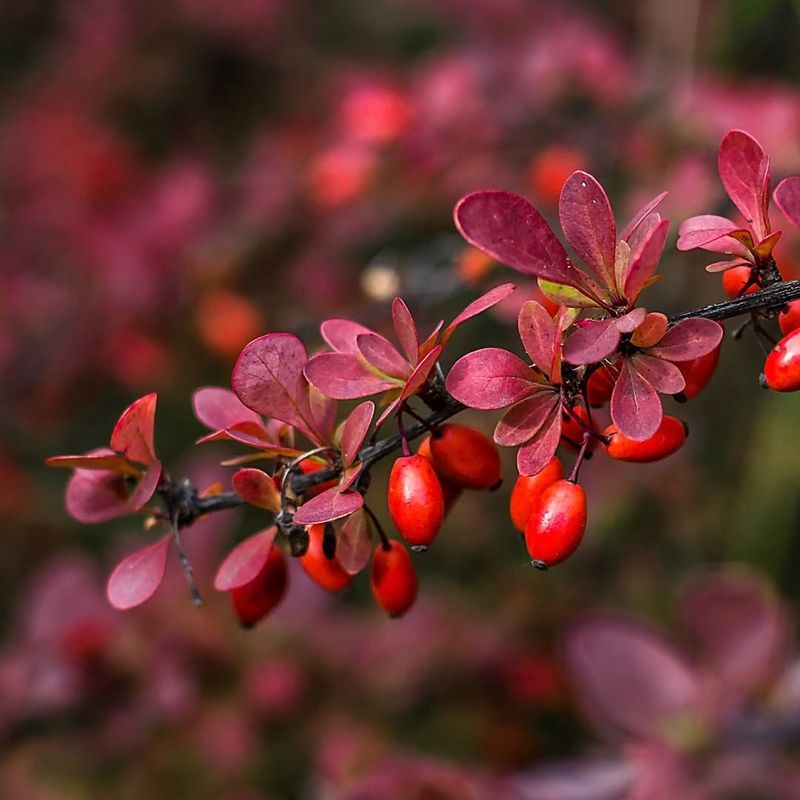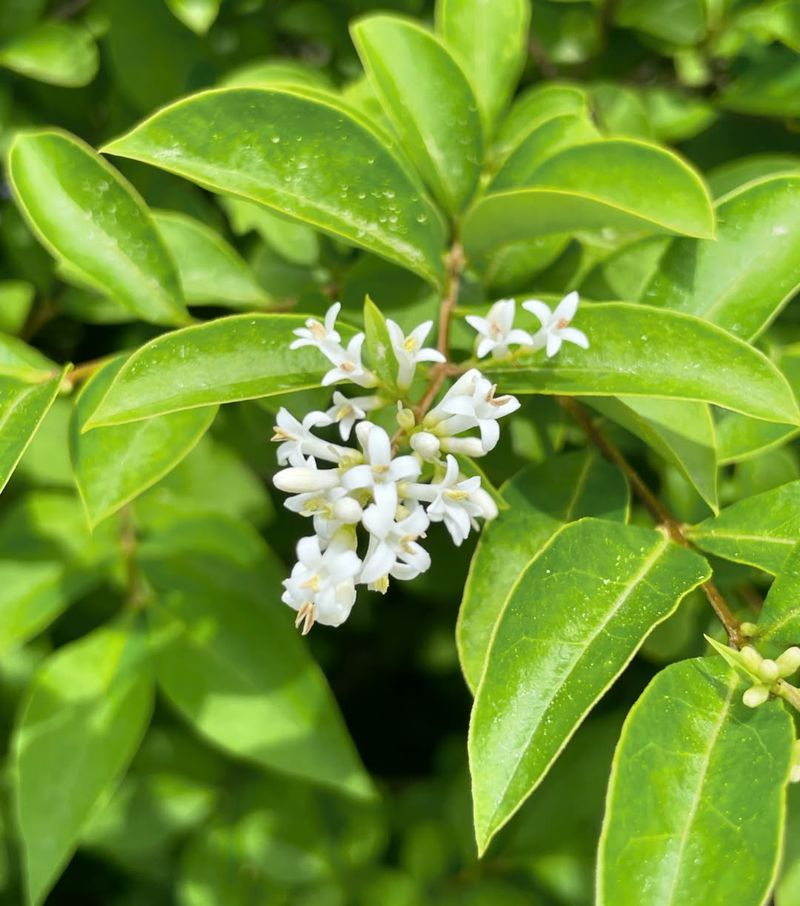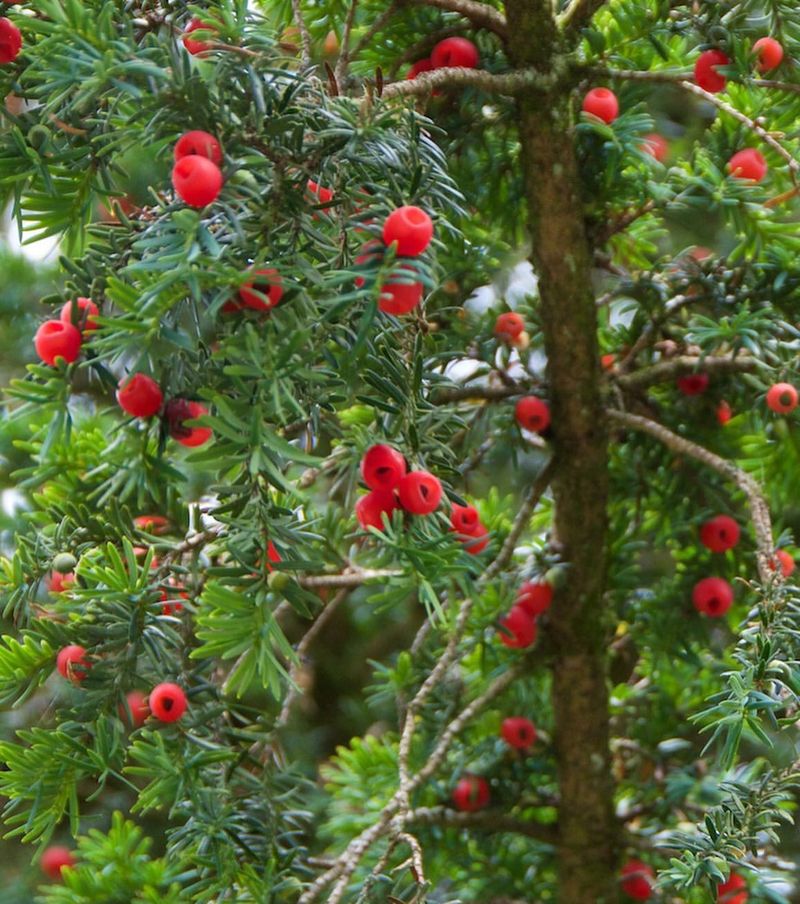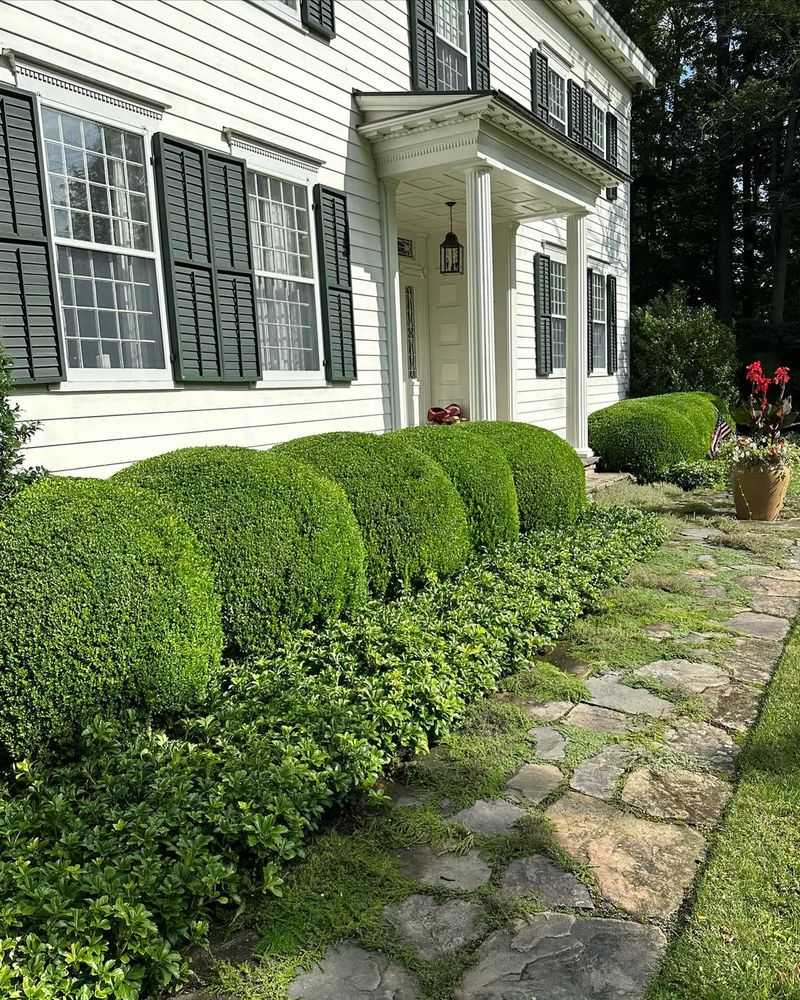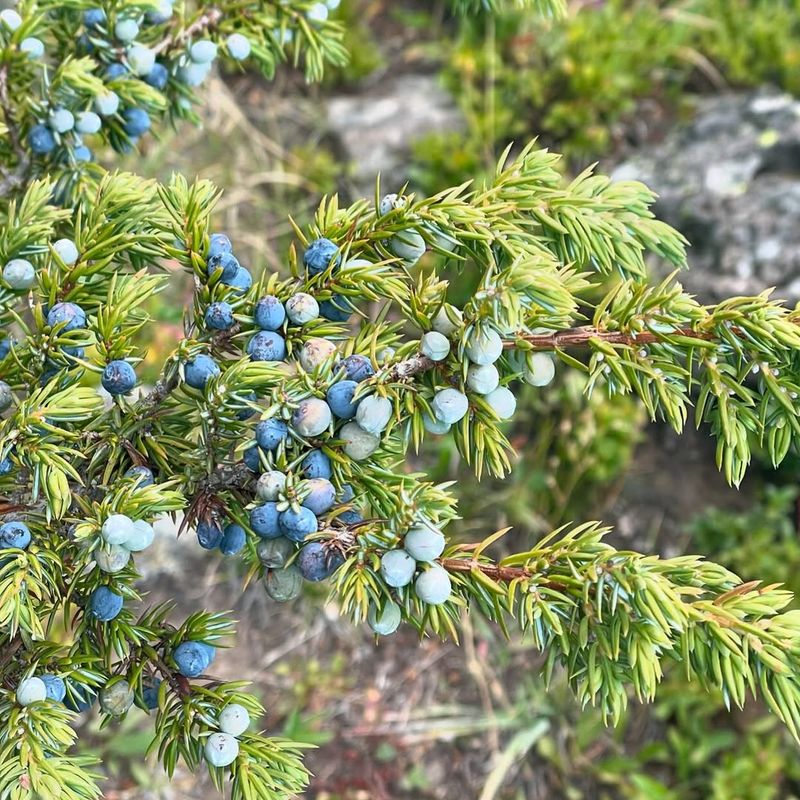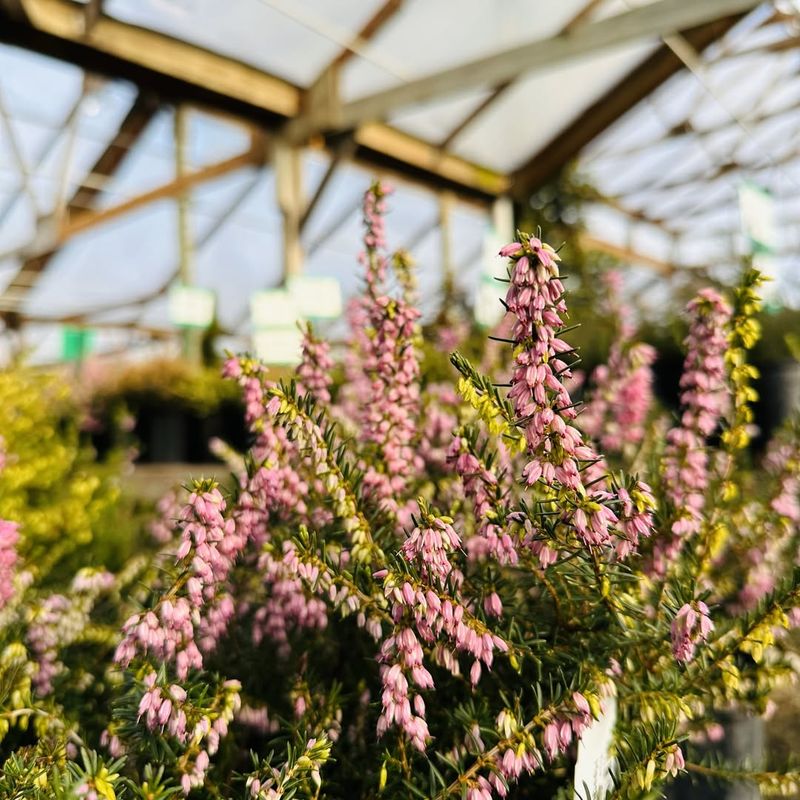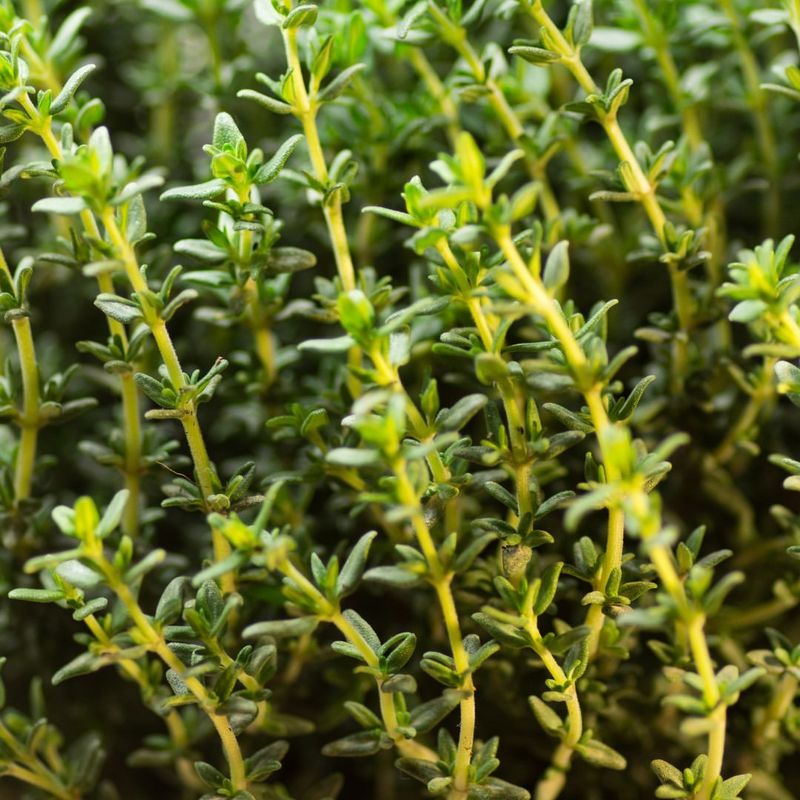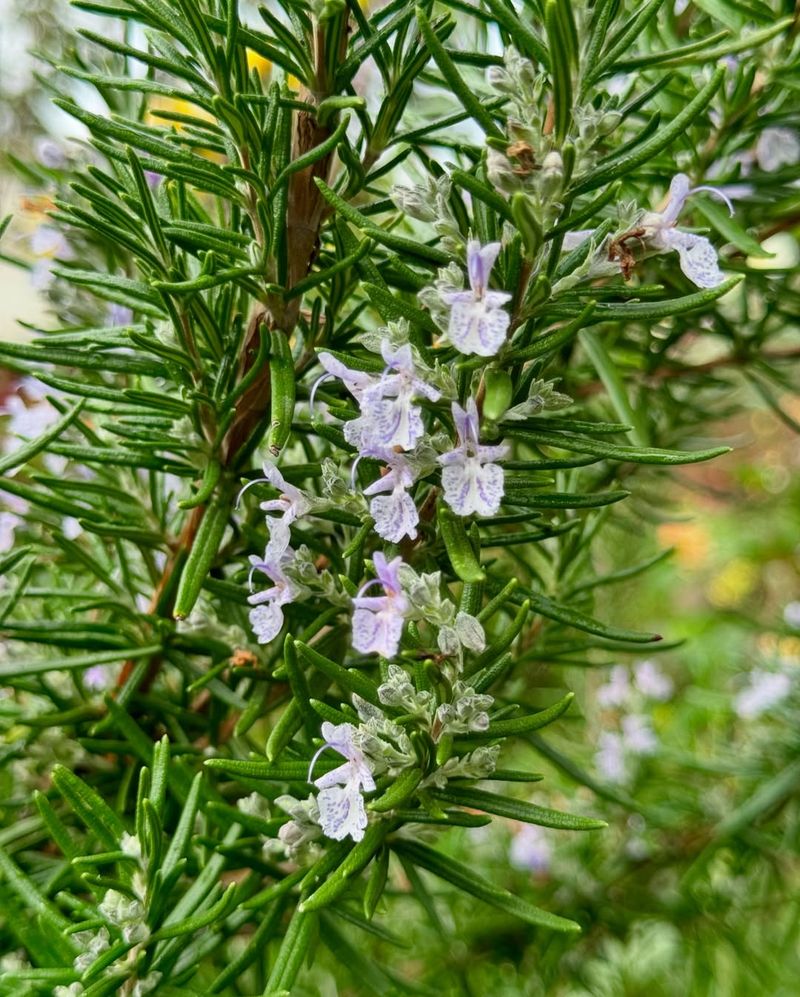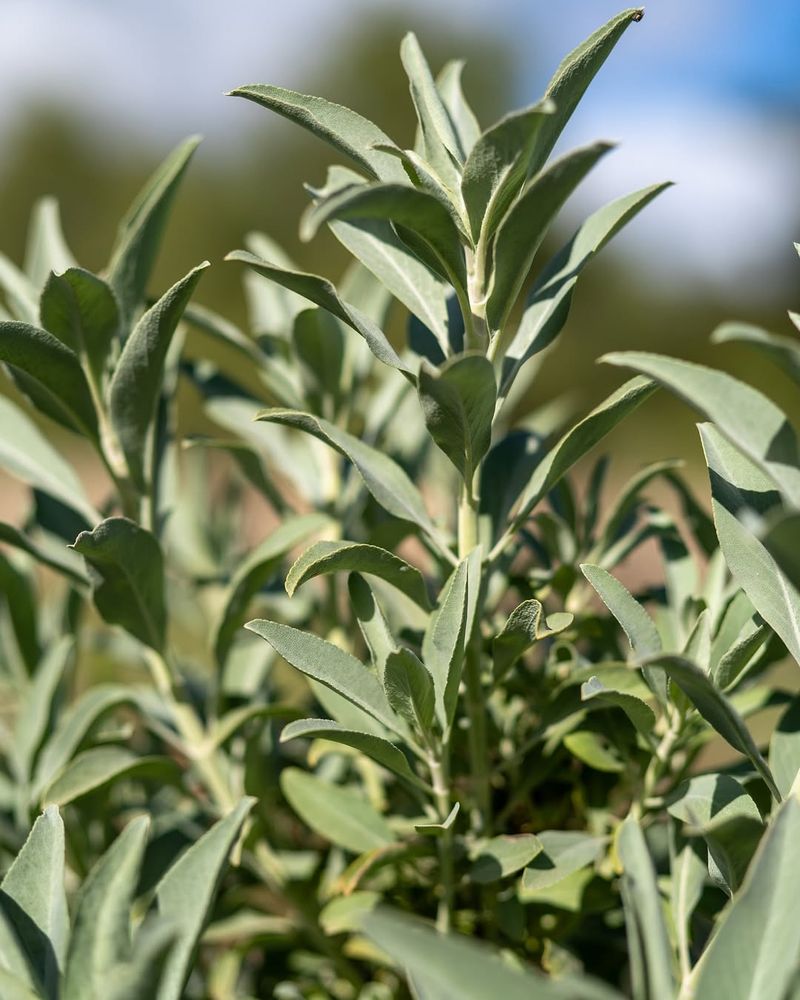Spring is a time of vibrant renewal, and as a passionate gardener, I’ve discovered that sometimes, the best care you can offer your plants is to let them be.
This season, I invite you to explore the art of letting nature take its course with 35 remarkable plants that thrive when left unpruned.
1. Lavender
Nature’s symphony plays out beautifully when you allow your garden to grow without interference. Lavender, with its aromatic blooms, thrives when left unpruned in spring. The plant’s natural shape is both charming and practical, as it attracts pollinators like bees and butterflies.
Its fragrant presence can elevate any garden, creating a calming atmosphere. Refraining from pruning helps lavender develop stronger roots and more abundant flowers later in the season. Allowing it to grow freely not only enhances its aesthetic appeal but also improves its resistance to pests and diseases.
2. Forsythia
With the vibrant burst of yellow, certain shrubs can transform any garden. Forsythia is one such marvel, best left unpruned to flaunt its full splendor. This approach allows its arching stems to create a natural, cascading effect.
As the flowers appear in abundance, they beckon spring with radiant warmth. By not pruning, forsythia maintains its health and vigor, offering a spectacle that’s both visually stunning and ecologically beneficial. Embrace its wild beauty and let it illuminate your spring garden.
3. Lilac
Imagine a plant whose blossoms fill the air with intoxicating fragrance. The lilac, left unpruned, rewards with a profusion of blooms that enhance its aromatic charm. The natural growth pattern allows lilacs to develop strong, resilient branches.
Their ability to attract pollinators adds ecological value to any garden. When you skip pruning, you encourage a fuller, more luxurious display of flowers. This hands-off approach fosters a sense of timeless beauty and enchantment, inviting you to savor each fragrant breeze.
4. Azalea
Vibrant colors and lush foliage can create a mesmerizing garden corner. The azalea, thriving when left unpruned, offers an explosion of color in spring. Its natural form provides shelter for various garden critters.
Resisting the urge to prune allows azaleas to develop a robust structure. This approach promotes healthier blooms and fewer diseases, ensuring a vibrant and lively garden display. Embrace their wild elegance and let them be the centerpiece of your garden.
5. Hydrangea
In a garden where beauty and resilience intertwine, certain plants stand out. Hydrangeas, with their bold blooms, are best left unpruned in spring. This practice enhances their ability to produce larger and more vibrant flowers.
The natural form of hydrangeas supports wildlife, offering shelter for small creatures. By avoiding pruning, you allow them to thrive and adapt naturally to their environment. The result is a garden full of life, color, and sustainable beauty.
6. Rhododendron
In the realm of majestic blooms, one plant reigns supreme. The rhododendron, when left unpruned, displays an impressive array of flowers. Its natural growth provides a dense habitat for birds and insects.
Allowing rhododendrons to grow freely encourages healthier blooms and a more robust structure. This approach not only enhances their visual impact but also strengthens the plant’s resilience against environmental stressors. A garden with unpruned rhododendrons is truly a testament to nature’s grandeur.
7. Camellia
Beauty often lies in simplicity, as some plants naturally express. Camellias, when left unpruned, exhibit their elegant form and stunning blooms. Their glossy leaves and vibrant flowers add a touch of sophistication to any garden.
By allowing them to grow unrestrained, camellias develop better resistance to diseases. The result is a healthier, more sustainable plant that can be enjoyed for years. Let their natural charm grace your garden this spring.
8. Butterfly Bush
In the dance of nature, certain plants play a starring role. The butterfly bush, with its vibrant flowers, thrives when left unpruned. Known for attracting butterflies, it becomes a lively addition to any garden.
This hands-off approach allows the plant to develop a natural, free-flowing shape. It supports a diverse ecosystem, providing food and shelter for various pollinators. Witness the transformation as your garden becomes a haven for fluttering guests.
9. Weigela
As spring unfolds, some plants reveal their true splendor when left untouched. Weigela, with its vibrant trumpet-shaped flowers, benefits from a hands-off approach. Its natural growth pattern supports a lively ecosystem.
By not pruning, you allow weigela to produce more abundant blooms. This encourages visits from hummingbirds and other pollinators, enriching your garden’s biodiversity. Experience the vibrant life that unpruned weigela brings to your spring display.
10. Wisteria
Graceful cascades of color can transform any garden space. Wisteria, when left to its own devices, creates an enchanting display of hanging blooms. Its vigorous growth adds a sense of drama and elegance.
Allowing wisteria to grow unpruned promotes a natural, free-spirited form. This enhances its resilience and flowering potential, making it a highlight of any garden. Let this whimsical vine add a touch of romance to your spring haven.
11. Clematis
Nature’s artistry is often best appreciated in its unrefined state. Clematis, with its striking blooms, thrives when given the freedom to grow naturally. Its vining habit allows it to climb and embellish structures beautifully.
By leaving clematis unpruned, you encourage a more prolific flowering. This approach supports its health and longevity, ensuring vibrant displays for years. Embrace the wild elegance of clematis in your garden design.
12. Holly
In nature’s palette, some plants offer a timeless allure. Holly, with its glossy leaves and vibrant berries, benefits from being left unpruned. This approach allows it to develop a natural, robust form.
The unpruned growth encourages more berries, providing food for birds during winter. By allowing holly to grow freely, you enhance its ecological value and aesthetic appeal. Let it stand as a symbol of enduring beauty in your garden.
13. Rose of Sharon
Amidst the array of flowering plants, some demand attention. The Rose of Sharon, with its tropical-looking blooms, thrives when left unpruned. This approach allows it to develop a natural, vase-like shape.
By not pruning, you encourage more abundant blooms and healthier growth. Its ability to attract pollinators adds ecological richness to your garden. Celebrate the exotic allure of Rose of Sharon this spring.
14. Beautyberry
Colorful surprises often await in the unpruned corners of a garden. Beautyberry, with its vibrant purple berries, benefits from a hands-off approach. Its natural form adds a unique visual interest.
By leaving beautyberry unpruned, you encourage more prolific berry production. This enhances its wildlife value, providing food for birds and other creatures. Discover the understated elegance of beautyberry in your landscape.
15. Spirea
In the subtle dance of blooms, some plants shine brightly. Spirea, with its cascading flowers, thrives when left unpruned. By allowing it to grow naturally, you embrace its delicate, fountain-like form.
This approach encourages more abundant and longer-lasting blooms. The unpruned growth supports local wildlife, adding ecological value to your garden. Experience the graceful allure of spirea this spring.
16. Viburnum
In the chorus of spring blooms, certain shrubs add a harmonious touch. Viburnum, with its creamy white flowers, benefits from being left unpruned. This approach allows it to develop a natural, rounded shape.
By not pruning, you encourage a more prolific flowering, enhancing its visual appeal. Viburnum also provides food and shelter for wildlife, making it a valuable addition to any garden. Enjoy the symphony of blooms viburnum brings to your space.
17. Dogwood
Among the trees that herald spring, some stand out majestically. Dogwood, with its iconic blossoms, thrives when left unpruned. This approach allows it to develop a natural, elegant form.
The unpruned growth encourages more abundant and vibrant flowers. Dogwood also provides habitat and food for various wildlife species. Let the timeless beauty of dogwood grace your garden this spring.
18. Mock Orange
In the world of fragrant blooms, certain plants captivate effortlessly. Mock orange, with its citrus-scented flowers, benefits from a hands-off approach. Allowing it to grow unpruned enhances its natural, bushy form.
This encourages more abundant flowering, filling your garden with delightful fragrance. Mock orange also attracts pollinators, adding ecological charm to your space. Experience the intoxicating allure of mock orange this spring.
19. Elderberry
In the realm of edible plants, some offer both beauty and bounty. Elderberry, with its delicate flowers and rich berries, thrives when left unpruned. This approach allows it to develop a natural, sprawling shape.
By not pruning, you enhance its ability to produce more flowers and fruit. Elderberry also supports wildlife, providing food and habitat for various species. Enjoy the dual benefits of elderberry in your garden ecosystem.
20. Hawthorn
In the tapestry of nature, certain trees weave a story of resilience. Hawthorn, with its thorny branches and vibrant berries, benefits from being left unpruned. This approach allows it to develop a natural, rugged form.
The unpruned growth encourages more abundant flowers and berries. Hawthorn also provides valuable habitat and food for wildlife. Celebrate the rugged beauty of hawthorn in your landscape.
21. Magnolia
In the spectacle of spring, certain blooms command attention. Magnolia, with its large, showy flowers, thrives when left unpruned. This approach allows it to develop a natural, elegant shape.
By not pruning, you encourage more abundant and longer-lasting blooms. Magnolia also provides habitat and food for pollinators. Let the majestic beauty of magnolia enhance your garden this spring.
22. Philadelphus
In the garden of fragrant wonders, some shrubs exude timeless charm. Philadelphus, known for its sweetly scented flowers, benefits from a hands-off approach. Allowing it to grow unpruned enhances its natural, rounded form.
This encourages more abundant and fragrant blooms. Philadelphus also attracts pollinators, adding ecological vibrance to your garden. Experience the enchanting allure of philadelphus this spring.
23. Snowball Bush
In the realm of ornamental shrubs, some captivate with their grandeur. The snowball bush, with its spherical blooms, thrives when left unpruned. This approach allows it to develop a natural, bushy form.
By not pruning, you enhance its ability to produce more and larger flowers. The snowball bush also supports local wildlife, adding ecological richness to your garden. Revel in the opulent beauty of the snowball bush this spring.
24. Nandina
In the dance of foliage and color, some plants stand out with subtle elegance. Nandina, with its red berries and delicate leaves, benefits from being left unpruned. This approach allows it to develop a natural, graceful form.
The unpruned growth encourages more vibrant foliage and berry production. Nandina also provides habitat and food for wildlife. Relish the understated beauty of nandina in your garden design.
25. Cotoneaster
In the quest for garden interest, certain shrubs offer unique appeal. Cotoneaster, with its arching branches and vibrant berries, thrives when left unpruned. This approach allows it to develop a natural, sprawling form.
By not pruning, you enhance its ability to produce more berries. Cotoneaster also supports wildlife, providing food and shelter for various species. Discover the distinctive beauty of cotoneaster in your landscape.
26. Firethorn
In the tapestry of garden shrubs, some weave a tale of vibrant resilience. Firethorn, with its fiery berries and thorny branches, benefits from a hands-off approach. Allowing it to grow unpruned enhances its natural, rugged form.
This encourages more abundant berry production, providing food for birds. Firethorn also adds a splash of color to your garden, creating a dynamic visual effect. Embrace the spirited beauty of firethorn this spring.
27. Barberry
In the realm of colorful foliage, some shrubs offer a bold statement. Barberry, with its red leaves and yellow flowers, thrives when left unpruned. This approach allows it to develop a natural, compact form.
By not pruning, you enhance its ability to produce more vibrant foliage. Barberry also provides habitat and food for wildlife. Enjoy the striking beauty of barberry in your garden setting.
28. Privet
In the art of garden structure, certain plants play a pivotal role. Privet, with its dense foliage, benefits from being left unpruned. This approach allows it to develop a natural, robust form.
The unpruned growth encourages more vibrant foliage and supports local wildlife. Privet also provides a visual barrier, adding privacy to your garden. Appreciate the practical beauty of privet this spring.
29. Yew
In the world of evergreen elegance, some trees stand timeless. Yew, with its dark needles and red berries, thrives when left unpruned. This approach allows it to develop a natural, stately form.
By not pruning, you encourage more berry production and healthier growth. Yew also provides valuable habitat for wildlife. Celebrate the enduring beauty of yew in your landscape.
30. Boxwood
In the realm of garden design, some shrubs offer timeless structure. Boxwood, with its dense foliage, benefits from being left unpruned. This approach allows it to develop a natural, compact form.
The unpruned growth encourages more vibrant foliage and supports local wildlife. Boxwood also provides a classic aesthetic, enhancing any garden design. Embrace the enduring charm of boxwood this spring.
31. Juniper
In the landscape of rugged beauty, some shrubs stand resilient. Juniper, with its needle-like foliage and blue berries, thrives when left unpruned. This approach allows it to develop a natural, sprawling form.
By not pruning, you enhance its ability to produce more berries. Juniper also provides valuable habitat and food for wildlife. Relish the natural elegance of juniper in your garden.
32. Heather
In the tapestry of floral wonders, some plants exude delicate beauty. Heather, with its tiny blooms, benefits from being left unpruned. This approach allows it to develop a natural, bushy form.
The unpruned growth encourages more abundant flowering, creating a sea of color. Heather also provides habitat for pollinators. Enjoy the serene beauty of heather in your garden.
33. Thyme
In the herb garden, some plants offer more than just culinary delight. Thyme, with its fragrant leaves and tiny flowers, thrives when left unpruned. This approach allows it to develop a natural, sprawling form.
By not pruning, you encourage more vigorous growth and flowering. Thyme also attracts pollinators, adding ecological value to your garden. Savor the aromatic charm of thyme this spring.
34. Rosemary
In the world of aromatic herbs, some stand out with robust character. Rosemary, with its fragrant leaves and blue blooms, benefits from being left unpruned. This approach allows it to develop a natural, bushy form.
The unpruned growth encourages more vigorous flowering and resilience. Rosemary also attracts pollinators, enriching your garden’s ecosystem. Delight in the invigorating presence of rosemary this spring.
35. Sage
In the tapestry of culinary delights, some herbs offer a touch of magic. Sage, with its velvety leaves and purple blooms, thrives when left unpruned. This approach allows it to develop a natural, sprawling form.
By not pruning, you encourage more vigorous growth and flowering. Sage also supports pollinators, adding ecological harmony to your garden. Relish the earthy elegance of sage this spring.

